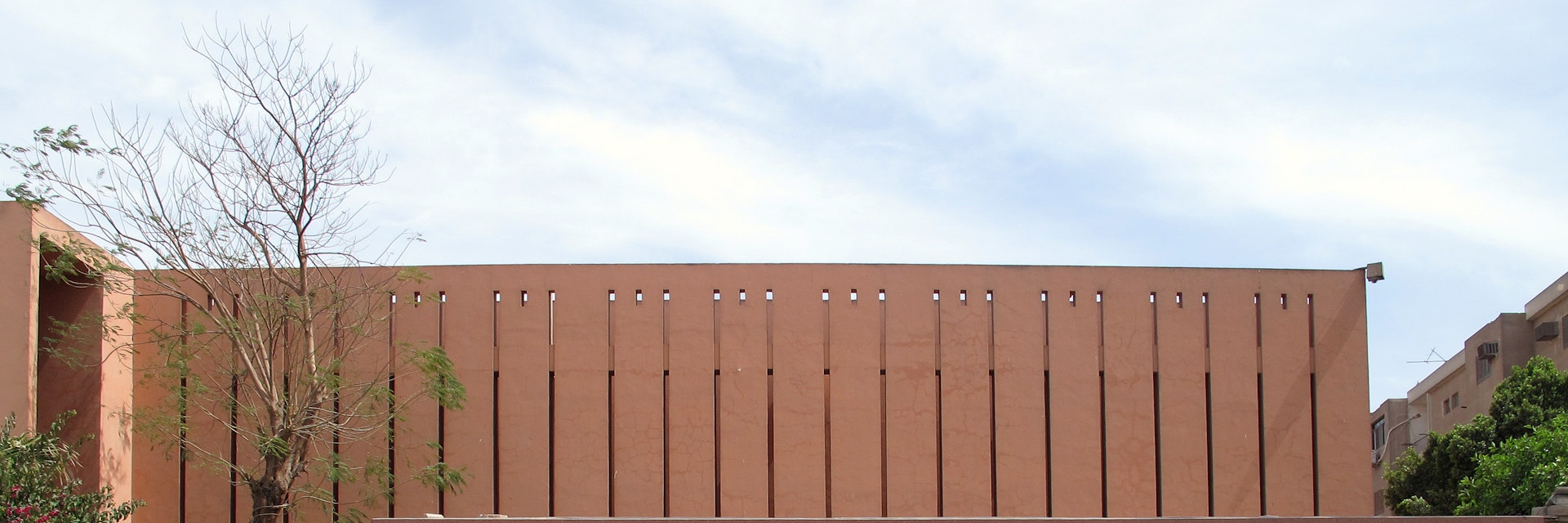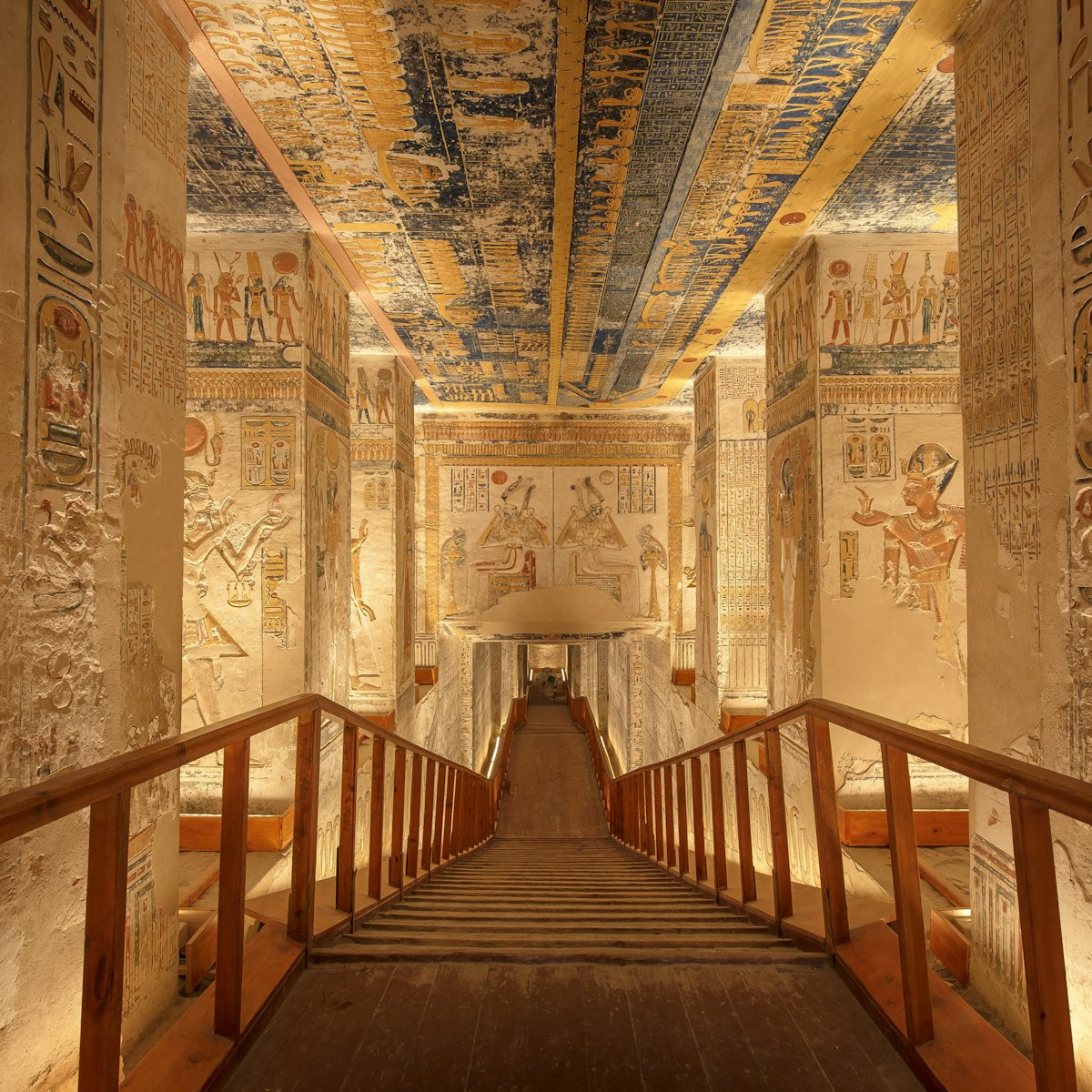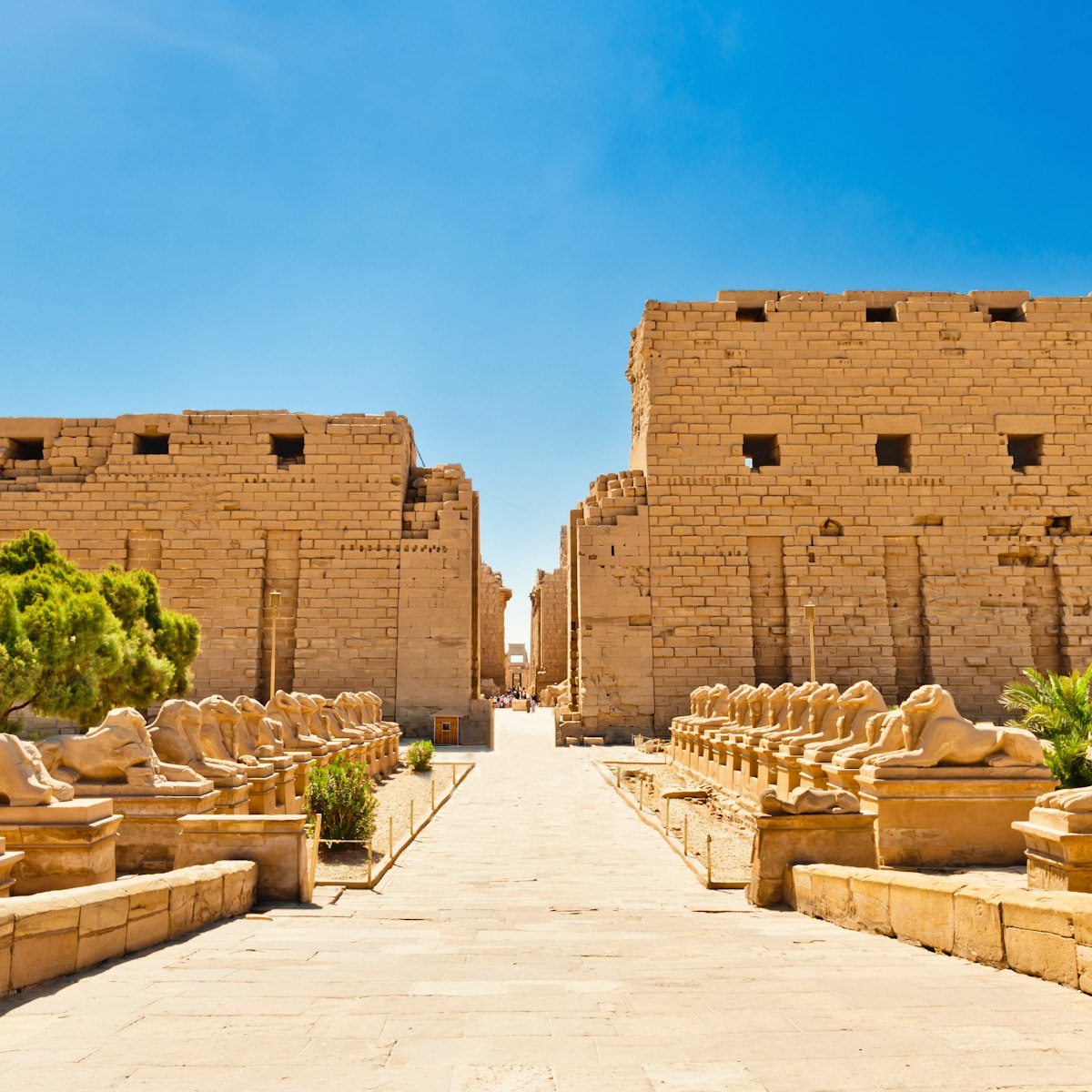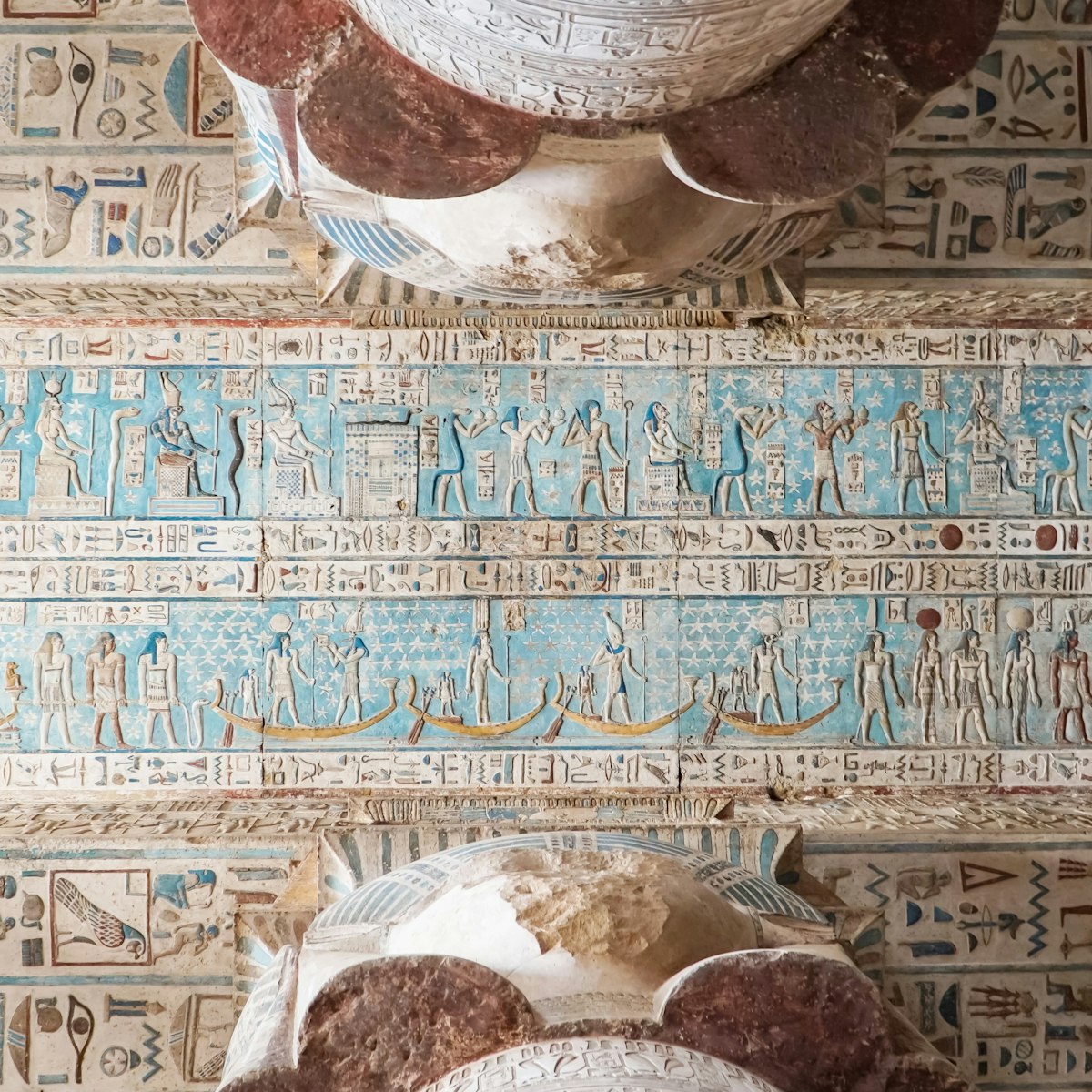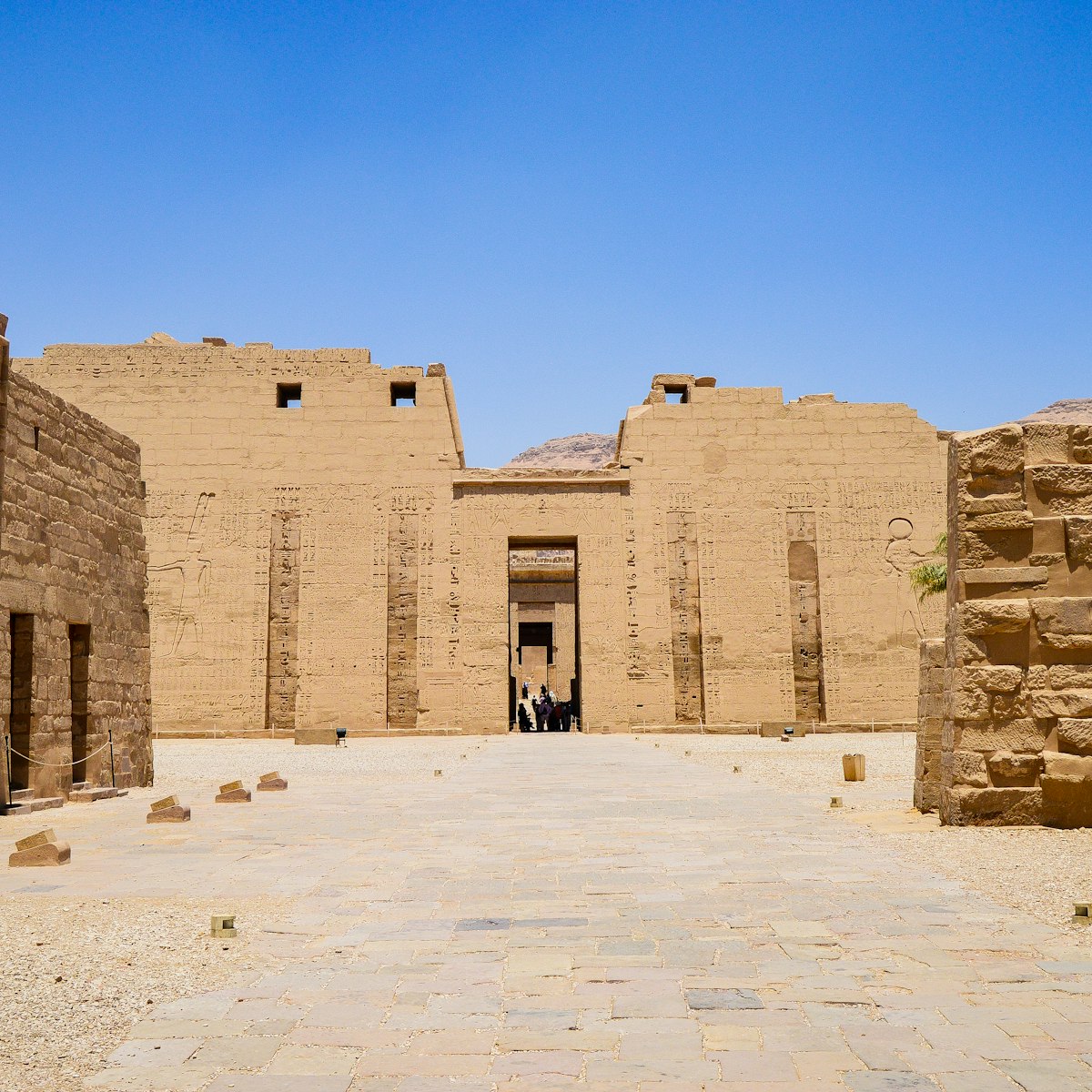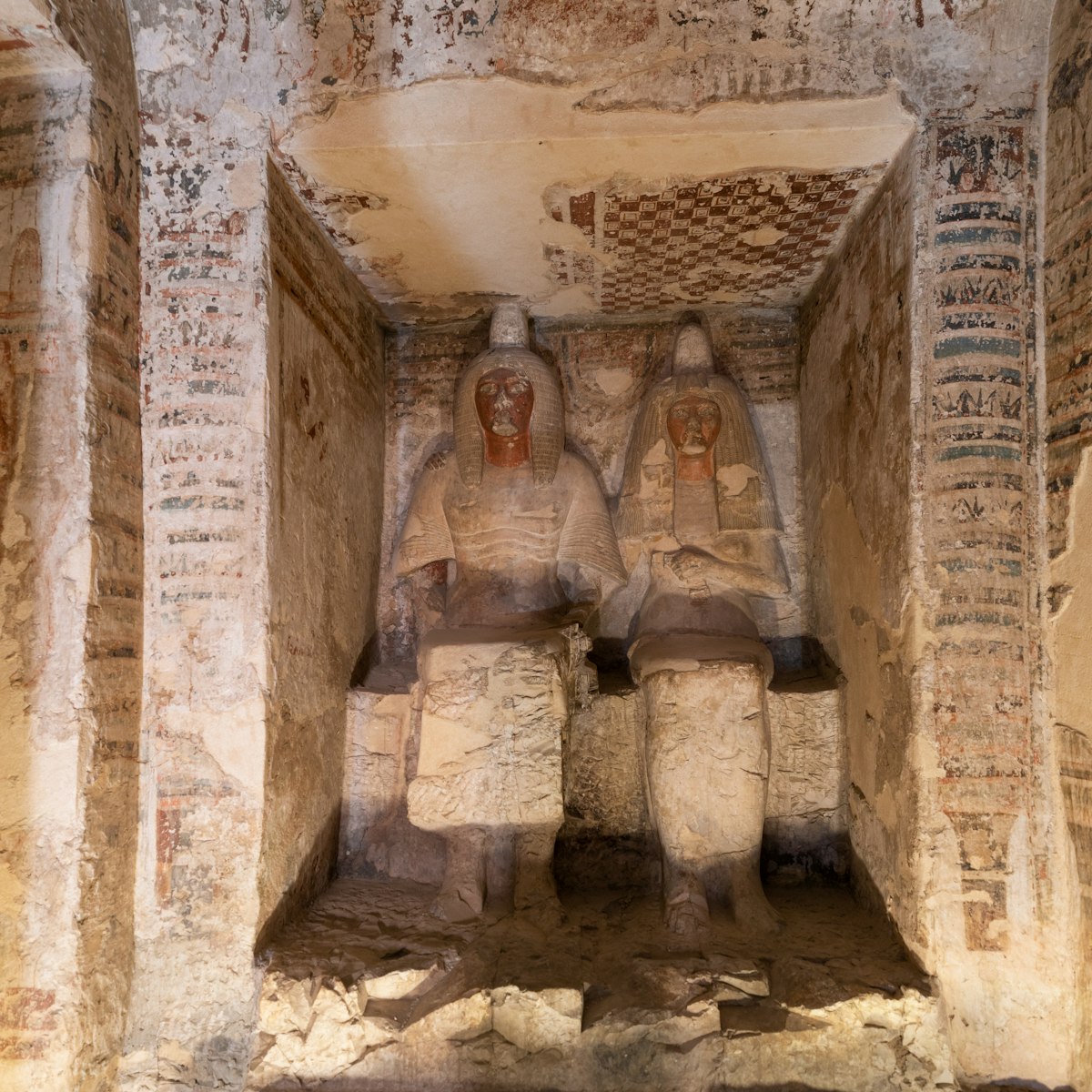This wonderful museum has a well-chosen and brilliantly displayed and explained collection of antiquities dating from the end of the Old Kingdom right through to the Mamluk period, mostly gathered from the Theban temples and necropolis. The ticket price puts off many, but don't let that stop you: this is one of the most rewarding sights in Luxor and one of the best museums in Egypt.
The ground-floor gallery has several masterpieces, including a well-preserved limestone relief of Tuthmosis III (No 140), an exquisitely carved statue of Tuthmosis III in greywacke from the Temple of Karnak (No 2), an alabaster figure of Amenhotep III protected by the great crocodile god Sobek (No 155), and one of the few examples of Old Kingdom art found at Thebes, a relief of Unas-ankh (No 183), found in his tomb on the west bank.
A new wing was opened in 2004, dedicated to the glory of Thebes during the New Kingdom period. The highlight, and the main reason for the new construction, is the two royal mummies, Ahmose I (founder of the 18th dynasty) and the mummy some believe to be Ramses I (founder of the 19th dynasty and father of Seti I), beautifully displayed without their wrappings in dark rooms. Other well-labelled displays illustrate the military might of Thebes during the New Kingdom, the age of Egypt’s empire-building, including chariots and weapons. On the upper floor the military theme is diluted with scenes from daily life showing the technology used in the New Kingdom. Multimedia displays show workers harvesting papyrus and processing it into sheets to be used for writing. Young boys are shown learning to read and write hieroglyphs beside a display of a scribe’s implements and an architect’s tools.
Back in the old building, moving up via the ramp to the 1st floor, you come face-to-face with a seated granite figure of the legendary scribe Amenhotep (No 4), son of Hapu, the great official eventually deified in Ptolemaic times and who, as overseer of all the pharaoh’s works under Amenhotep III (1390–1352 BC), was responsible for many of Thebes’ greatest buildings. One of the most interesting exhibits is the Wall of Akhenaten, a series of small sandstone blocks named talatat (threes) by workmen – probably because their height and length was about three hand lengths – that came from Amenhotep IV’s contribution at Karnak before he changed his name to Akhenaten and left Thebes for Tell Al Amarna. His building was demolished and about 40,000 blocks used to fill in Karnak’s ninth pylon were found in the late 1960s and partially reassembled here. The scenes showing Akhenaten, his wife Nefertiti and temple life are a rare example of decoration from a temple of Aten. Further highlights are treasures from Tutankhamun’s tomb, including shabti (servant) figures, model boats, sandals, arrows and a series of gilded bronze rosettes from his funeral pall.
A ramp back down to the ground floor leaves you close to the exit and beside a black-and-gold wooden head of the cow deity Mehit-Weret, an aspect of the goddess Hathor, which was also found in Tutankhamun’s tomb.
On the left just before the exit is a small hall containing 16 of 22 statues that were uncovered in Luxor Temple in 1989. All are magnificent examples of ancient Egyptian sculpture, but pride of place at the end of the hall is given to an almost pristine 2.45m-tall quartzite statue of a muscular Amenhotep III, wearing a pleated kilt.
